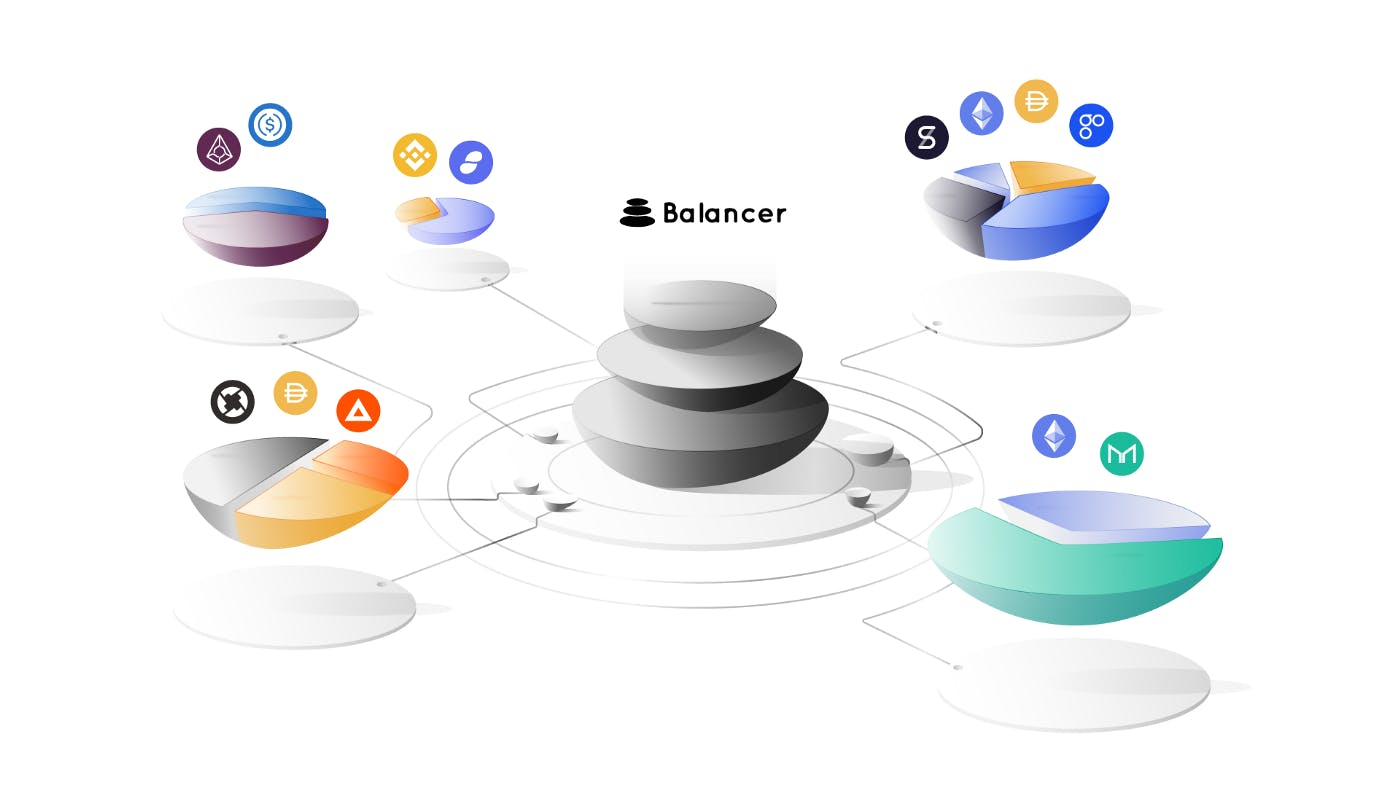
- All
- Tools
- Analytics
- Technical Analysis
- Trading
- Blockchain
- DeFi
- Guides
- Company News
- Educational
- Opinion
- Price Predictions
- Market News
- News
- Trading cases
- Practical guides
- Exchanges
- Trading signals
- Cryptocurrency
- Crypto bots
- Other
Become a crypto master
Learn everything about crypto,
trading and bots

Airdrops in 2025
Start Trading on 3Commas Today
Get full access to all 3Commas trading tools with free trial period

What is airdrop and how does it work?
Airdrop in crypto is a marketing tool based on allocating small amounts of tokens to active wallet addresses. It has become an especially common stunt for new cryptocurrency projects since 2017.
Airdrop’s main goal is increasing awareness of a new blockchain startup and growing a community around it as fast as possible. This means that crypto projects that use it seek to improve their public image. Thus, no legitimate airdrop requires capital investments; users that have a certain amount of the digital asset in their public wallet before the snapshot or fulfil a simple task like sharing information about the crypto project, automatically become eligible.
While some airdrops happen without previous public announcements, in most cases a promotional campaign on the website, crypto forums and social networks precede the event. Wallet holders on the biggest blockchain networks like Ethereum, Bitcoin or BSC are predominately the target for promotion through airdrop.
Advantages of crypto airdrops
- An airdrop is a method for new blockchain projects to stand out in the competition that includes thousands of startups and developed networks.
- Multiple Binance airdrop events prove the efficiency of the marketing tool as it’s simple and relatively cheap in execution. The fact that companies can receive coverage on social media of wallet holders by giving out a small amount of new cryptocurrency makes the effort worth it.
- More people know about the digital asset, higher are the chances of its success. The airdrop might even serve as a viable fundraising method because if well-timed, it can prompt recipients of the new token to educate themselves about it.
- Airdrop is also beneficial for eligible wallet holders as it essentially provides free digital assets, which might bring substantial profit in the future.
Disadvantages of crypto airdrops
The trickiest part is establishing a perfect tokens to recipients ratio. Allocating an underwhelming amount of coins might not bring expected marketing results. On the other hand, by giving out too many tokens, the blockchain project risks diluting their value on the market. In fact, the plunge in value can also occur if the recipients sell the coins right away. This damages the reputation of the crypto among real investors.
From the perspective of the recipients, the main drawback is the risk of falling for fraud pump-and-dump schemes that are aimed to inflate the value of the cryptocurrency artificially.
How to distinguish crypto hard forks and airdrops?
Crypto airdrop meaning is different from hard fork, even though these events have some similarities. In fact, in each case, holders of a prior digital asset receive new tokens at a certain ratio to the volume of their current holdings. So what are the key differences?
Hard Fork
Hard fork happens when the developers of a given cryptocurrency create a new blockchain network using the same code. It occurs when the factions of the development team, miners, and investors decide to take cryptocurrency in different directions. The newly created asset might adopt changes to the code, implement additional features and switch the protocol, while the preexisting digital currency continues to develop in its own direction. One of the brightest examples of a hard fork is Bitcoin cash. When it was launched, all the holders of BTC were provided with an equivalent amount of BCH.
Airdrop
Airdrop is a marketing mechanism based on allocating cryptocurrency to particular recipients. For instance, ICO airdrop is the delivery of a cryptocurrency to a group of early supporters that participated in the ICO event.
Moreover, companies usually accrue tokens on the wallets of holders of developed blockchains like Ethereum or Bitcoin. Airdrop is simply a mean of boosting the recognition for a new token or blockchain startup, whereas a hard fork leads to the creation of two separate versions of the existing cryptocurrency.
Token airdrop classification explained
Over the several years of existence, the marketing stunt of airdrop has taken on different forms. How do crypto airdrops work? To answer this key question properly, it’s necessary to understand the difference between the types of crypto airdrops that startups use for promoting new digital assets.
Standard airdrop
To become eligible for participating in this event and receive a small amount of new virtual currency wallet holders need to create an account at a startup project or sign up to a newsletter. It’s the most common type of airdrop event. Usually, you will have to complete Know Your Customer (KYC) verification before receiving the drop.
Exclusive airdrop
Designed for the most loyal customers of blockchain networks this type of airdrop allows receiving first dibs of new digital assets. Aggregators and special websites like Binance often run exclusive airdrops to give exposure to new promising projects. The main advantage of this type of airdrop is that there are no strings attached. For instance, loyal users of Uniswap were able to participate in the airdrop of 2,500 UNI coins in September 2020.
Holder airdrop
The main requirement for becoming eligible for this type of airdrop is holding a certain amount of particular digital assets. For instance, Ethereum airdrops offered free tokens to the members of the network’s community when a new project was created on one of their blockchains. Do not confuse these projects with a hard fork as they are entirely new platforms that just use the protocol of the existing blockchain.
Bounty airdrop
As it comes from the name, you need to earn the right to participate in this type of airdrop. More precisely, to get tokens from it you need to share information about the blockchain on your social network profile. It includes re-tweeting posts about it, following the account of the company, creating a post, etc. In other cases, you might have to refer new users to the network to get bounty airdrops.
Cryptocurrency airdrop examples
Even though the issuing company definitely gets the most value out of the airdrops, they still might be potentially profitable for crypto enthusiasts. Successful airdrop is a win-win situation for both sides. Let’s take a look at some real examples.
Ontology airdrop
This airdrop happened in 2018 when ontology gave out its native ONT token to all NEO users. It was also possible to take part in the allocation of 1,000 ONT by just subscribing to the newsletter of the platform. The main purpose of the event was to reward loyal investors of the NEO network for their participation in fundraising. As a result, Ontology gave away 10 million ONT coins (worth 42 million USD at the time). Despite the bear market, the price of the token more than doubled, bringing the value of airdropped ONTs to 100 million USD.
Uniswap airdrop
All the users that had used the Uniswap decentralized exchange (DEX) platform and made at least one transaction before the beginning of September 2020 with it were eligible for the airdrop of its native coin UNI. Every recipient received 400 tokens during the event but most of them sold the airdropped coins right away. However, those who HODL definitely made the right decision as the price of UNI has been on a steady increase and has increased more than 15 times since then.
OmiseGo airdrop
The platform airdropped its OMG native tokens to the ETH holders of the Ethereum blockchain in July of 2017. As a result, 5% of the total liquidity of OMG coins were distributed among recipients at a ratio of 0.075 OMG per 1 ETH. Only wallets that held at least 0.1 ETH at the time of the snapshot were eligible for participating in airdrop.
1inch airdrop
Another DEX in the list performed a successful airdrop of its native currency. It occurred in December 2020 and included the distribution of 90 million 1INCH coins to 55,000 recipients. Users that traded more than 20 USD or made at least 4 trades before the airdrop day could participate in it. Since the launch of 1INCH tokens, their price doubled, which means its holders eventually made a great profit.
Key takeaways
Crypto airdrops are an efficient tool of boosting the exposure of the new blockchain projects by giving out its native tokens to the eligible wallets. It doesn’t require any capital investments but in some cases might bring considerable profits. However, it’s essential to define legitimate airdrops to avoid fraud schemes that appear on the market.
Airdrops in 2025: Strategic Shifts and Regulatory Pressures
As the cryptocurrency landscape matures, the functionality of airdrops has evolved from marketing tools to more strategic methods of distribution. In 2025, their purpose within user acquisition and tokenomics frameworks has become more nuanced, particularly regarding Layer 2 networks and nascent DeFi protocols seeking to lock in liquidity and cultivate a loyal community.
Key Developments in Airdrop Strategy
A notable change is the introduction of pre-token launch “points” systems, which has gained popularity. These programs incentivize active and constructive participation, such as liquidity provision or governance voting, by granting prospective chances for token allocation. Unlike open-ended airdrops, these systems are more targeted and performance-driven, encouraging sustained activity rather than speculative engagement.
DeFi projects capitalizing on Layer 2 infrastructure are using airdrops to garner liquidity and demonstrate commitment towards decentralization. Anticipated distributions from new rollups and zero-knowledge networks have heightened user interest towards on-chain activity associated with new scalability solutions.
Regulatory and Tax Considerations
Simultaneously with such technological advancements, the legal environment has emerged as a key concern influencing the design of airdrops. Important regulators, most notably in the US, have indicated that airdropped tokens may be subject to securities laws. Consequently, a lot of projects now specifically exclude certain geographies from eligibility or place stringent KYC/AML thresholds to mitigate exposure.
Taxation is yet another issue that demands attention. In a number of jurisdictions, the US inclusive, the fair market value of airdropped tokens at the point in time of receipt is deemed as taxable income. This means for a professional trader or an asset manager, meticulous documentation is mandatory—not just for compliance, but also for performant reporting.
Looking Ahead
By 2025, airdrops are no longer just promotional tactics; they have now transformed into strategy reflecting legal priorities, community-building methods, and participant expectations that become more professional. For traders and asset managers, the opportunity to analyze such elements within a managed risk paradigm now forms essential competitive differentiators.

A proven leader, successful at establishing operational excellence and building high-performance teams with a sharp focus on value creation and customer success.





